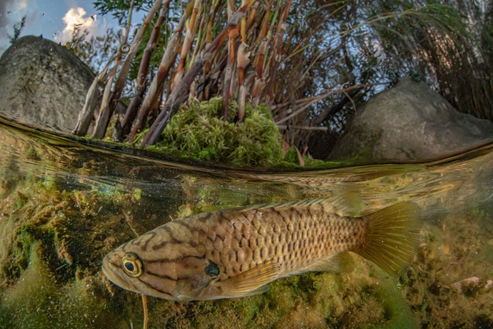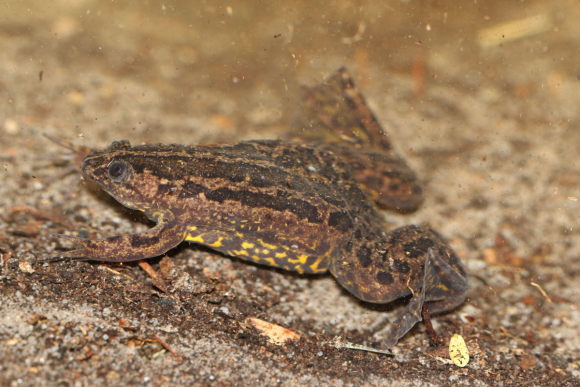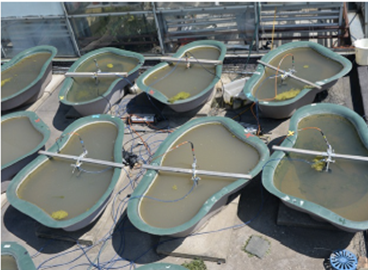10 August 2020 | By Dr Josie South

The morphological traits of invasive largemouth bass (Micropterus salmoides) are more specialised for preying on fish than native species counterparts. This was the finding of a collaborative project involving researchers from the University of Wageningen in the Netherlands and C∙I∙B members from the South African Institute for Aquatic Biodiversity (SAIAB) and Stellenbosch University.
Largemouth bass are a global invader and the C∙I∙B has identified this invader as a model species for studying the context dependencies of invasions. Largemouth bass is an efficient fish predator and is known to have negative effects on native species. In most cases, the trophically similar native species Cape kurper (Sandelia capensis) have disappeared from stream reaches invaded by largemouth bass.
To understand why largemouth bass are capable of having strong consumptive and non-consumptive effects on native species, the project team compared the morphology of juvenile largemouth bass with the trophically similar native species Cape kurper. Morphology is the study of the form of living organisms. The form (internal and external) are directly related to the ecological role of a species and the food it is able to consume.
Results from the morphological analysis shows that largemouth bass are more specialised for pursuit hunting fish prey than Cape kurper, which is more specialised for ambush hunting fish prey. According to Dr Josie South, co-author of the paper in Biological Invasions, this may explain why largemouth bass exert higher impacts on native fish populations than the native species. She adds, “Our results also suggest that Cape kurper are better able to hunt in more complex habitats whereas largemouth bass are not. This means that streams which have degraded habitats could experience higher negative effects from largemouth bass invasions.
Read the paper
Luger, A.M., South, J., Alexander, M.E., Ellender, B.E., Weyl, O.L.F. and Nagelkerke, L.A.J. 2020. Ecomorphology of largemouth bass relative to a native trophic analogue explains its high invasive impact. Biological Invasions 22, 2223–2233 (2020). https://doi.org/10.1007/s10530-020-02252-2
For more information, contact Dr Josie South at j.south@saiab.ac.za



